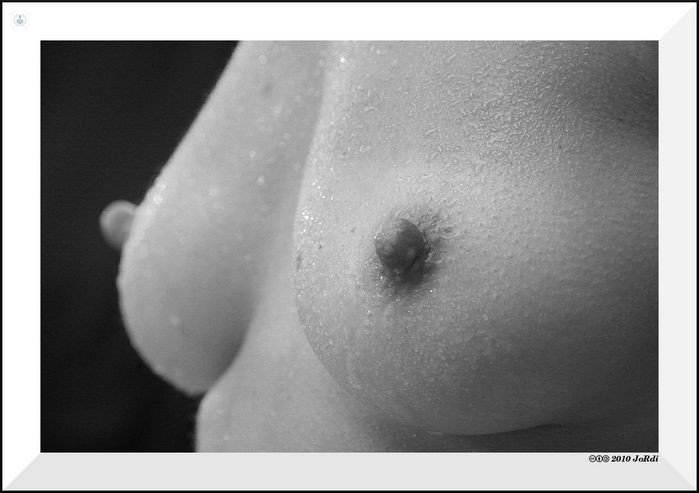Breast Cancer:What postoperative complications exist?
Written by:Breast cancer is a disease with more influence on women's health. After his diagnosis and intervention, some collateral damage due to interventions and as a result of radiation treatments and chemotherapy are produced.

1. Pain:
After the psychological and traumatic for the patient process is fundamental to recover from breast cancer and readjusting to life functionally pillar.
Treatment
All post-surgical techniques are to discuss the processes that cause pain:inflammation, shrinkage, atrophy, atrial restriction…
2. Restrictions headphones and functional impotence:
After a surgery, all muscle and skeletal parts involved are affected in various ways. One is by the glenohumeral joint and acromiohumeral because all the muscles that surround them are affected in turn atrophy and cause a loss of function.
Other affected system is the fascial system. The human body is wrapped through this connective tissue surrounding muscles and viscera. The lack of proper motion ultimately diminishes the capacity for growth and healing of tissue.
Treatment
The Fisiomedico institute raises a number of specific treatments for affected parties, such as the treatment of soft tissue manual therapy, work on fascial system in CelluM6, manual therapy, myofascial stretching and combination therapy with Hubber Motion Lab.
Also recovers articular mobility with active and passive, combined with pilates program specializing in breast pathology and Hubber cinesiterapia.
3. Seroma:
It is a serous fluid that builds up inside a residual postsurgical cavity. May occur in the spaces between the skin, fat, muscle, nerves, and connective tissue cells. It is the most common complication of breast surgery, with an incidence of over 60% of patients.
4. Lymphorrhoea:
It is a complication associated with ablation of axillary lymph nodes as part of the surgical treatment of breast cancer. After this ablation, sometimes afferent and efferent lymphatic vessels containing lymph discharged, which may cause a seroma, and, in turn, an infection. Between 15 and 45% of patients suffer.
Treatment
This is with advanced technical manual lymphatic drainage.
5. Edema:
It is the presence of an excess of fluid in body tissues after a traumatic process or surgery. It usually occurs in the extracellular fluid compartment, but can also affect intracellular fluids.
Treatment
This is either manual or mechanical technique with drainage CelluM6, which, with its mechanical effect, stimulates the lymphatic system work and promotes the reabsorption of edema lymphatic drainage.
6. Scars:
Each year in the developed world there are 100 million patients acquire scars as a result of 55 million elective operations and 25 million operations after trauma. The healing process has several stages:inflammation, tissue repair and remodeling. A modification of any of these steps can produce an anomaly repair, which can manifest as a hypertrophic scar or keloid atrophic.
Treatment
There are several treatments but our institute opts for manual lymphatic drainage, which is a soft rhythmic therapy that pulls the skin without slipping or losing contact along the superficial lymphatics, with the aim of improving the reabsorption edema through the uptake and evacuation of fluids.
Another technique for the treatment of hypertrophic scars is microdermabrasion, which is to control proper remodeling of the epithelial layer (a tissue that lines the free surfaces of the body). Through CelluM6, besides, you can reactivate the links produce collagen and elastin proliferation through the mecanotraccion skin.
7. Lymphedema:
This is a swelling of the limb caused by an accumulation of fluid in the interstitial space due to a malfunction of the lymphatic system. It is characterized as a chronic edema and comes in a soft or hard (depending on the concentration of proteins containing ), elastic or fibrous and not relieved by elevation of the affected limb.
The most frequent causes of lymphedema are the extirpation of the axillary nodes, type of surgery, the pathological state of the nodules, the frequency and intensity of radiation therapy or chemotherapy and misuse of recommendations.
Treatment
The goal is the reduction of volume, decreased conjunctival fibrosis, skin care and scarring, prevention of the aggravating factors, functional rehabilitation of the affected limb, pain control and personal reintegration, limb social and patient work.
The treatment of lymphedema is the set of different complementary therapeutic alternatives each. The IF decongestive therapy is a therapy that combines the application of the affected limb DLM, alternating with treating CelluM6 makes a motorized drainage and desfibrosante. Finally, you can also use compression bandages and miolinfoquineticos exercises.


